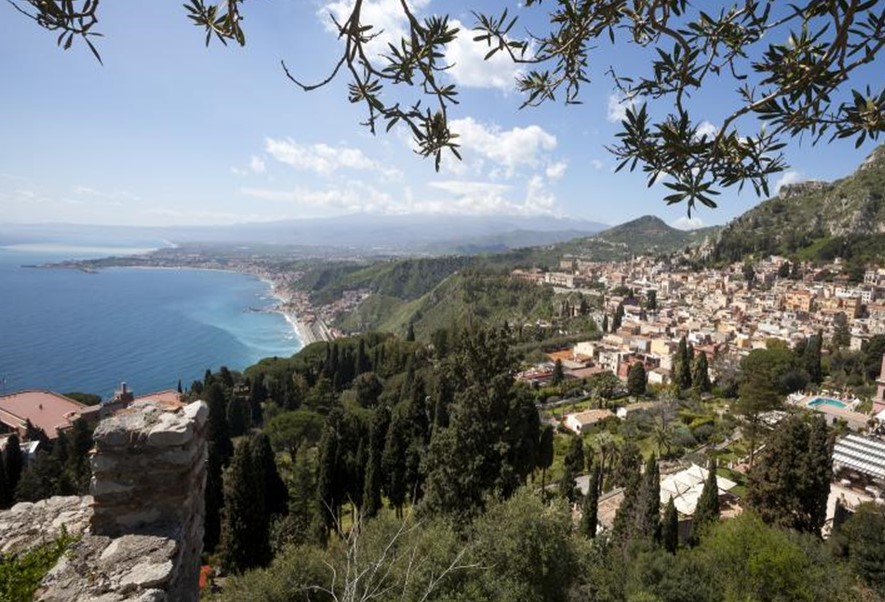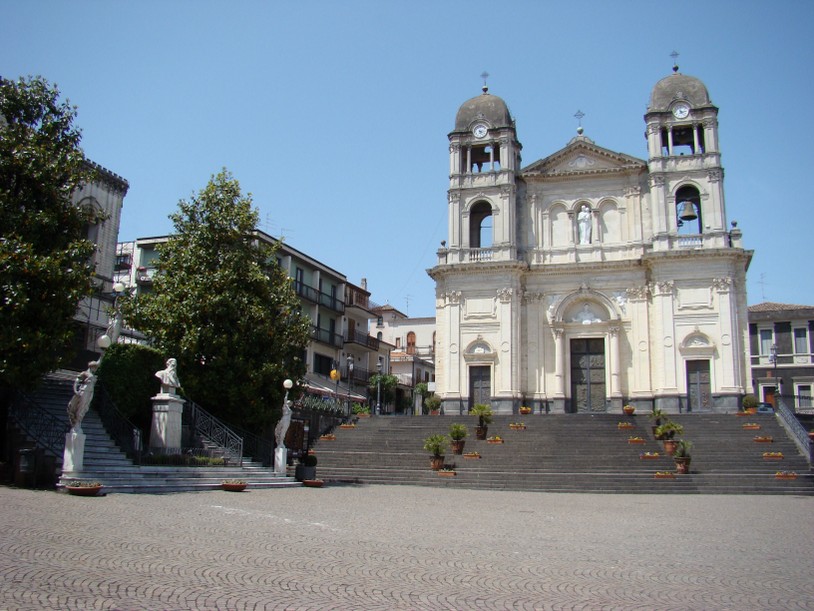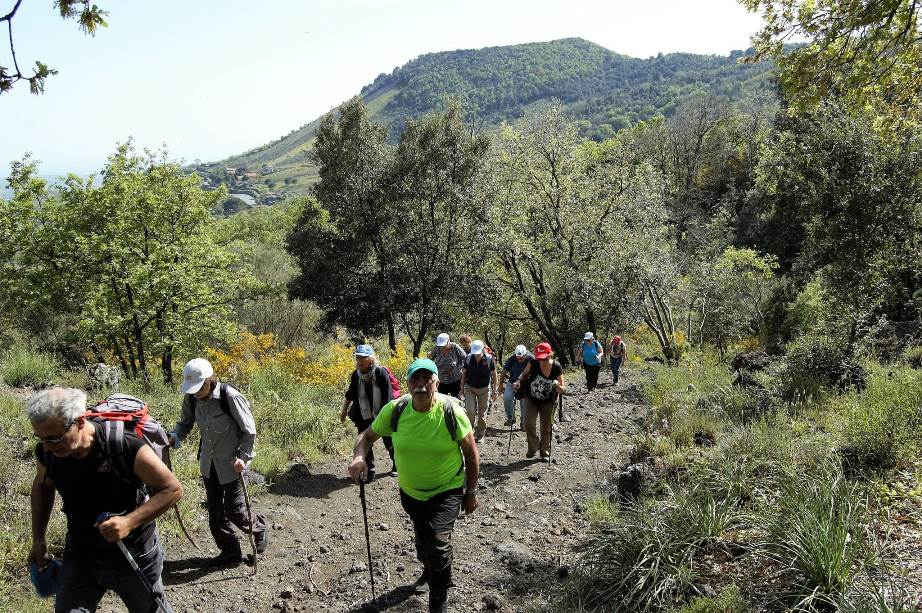There is no denying you’re on the slopes of an active volcano during the second leg of the Genista Trail that runs through the scenic Valle del Bove, tracing the paths of two 20th-century lava flows that threatened the high-altitude hamlets of Milo (in 1950-51) and Fornazzo (in 1979). You’ll follow a historic mule track past the 700-year-old Ilice di Carrinu, an enormous holm oak that dwarfs the ruins of a stone cottage, to the Valle del Bove that offers spectacular views of Etna’s southeast crater. A highpoint of this leg is the Monte Fontana scenic overlook: if you’re lucky, you’ll catch the bright yellow broom flowers that cover this area during the spring and early summer and give the Genista Trail its name
How to explore: With its recent lava flows crisscrossing the route in two places and unique landscape of the Valle del Bove, you’ll want to explore this area with a volcanologist guide (see above) to fully appreciate the fascinating geology and ecosystem marking this area. The route is made up of stretches of trail and country road, and may be hard to navigate on your own.
Local specialties: The area surrounding Sant’Alfio has been known for its bold red Etna Rosso wines for centuries; according to legend, this was the wine that Ulysses offered to Polyphemus, son of fire god Hephaestus, before blinding him. Today, there are a number of historic and new wine producers putting this DOC-classified wine on the map, including Il Cantante, passion project of Mick Hucknall, lead singer of the band Simply Red.
Don’t miss: The “Castagno di Cento Cavalli”, or Chestnut of the Hundred Horses, sits near Sant’Alfio. This 2,000-year-old chestnut is said to have given shelter to Joanna of Aragon and her retinue of 100 horses and riders during a thunderstorm in the 15th century. The legend is depicted in a work by Jean Houel, which now hangs in St. Petersburg’s Hermitage.





